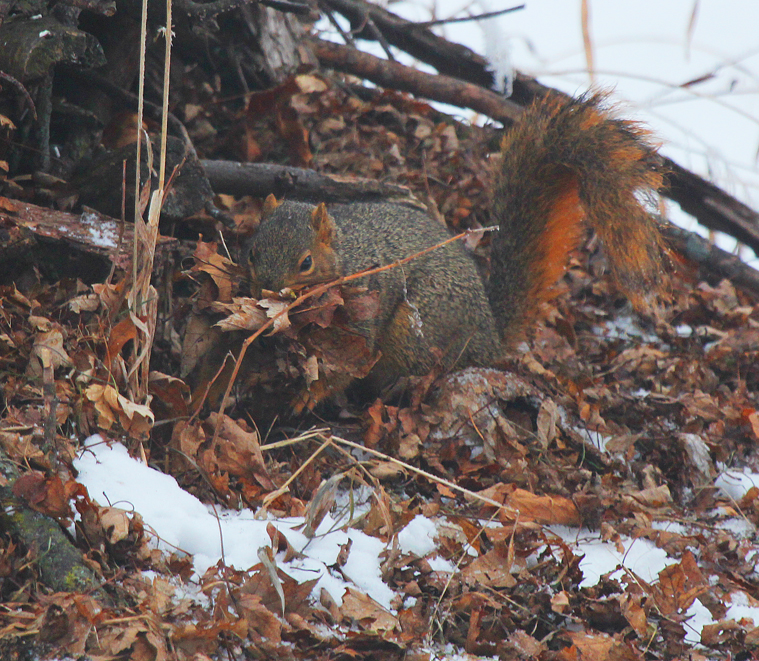Nature Walk: Nesting fox squirrels
By Kerri on January 20, 2014 in Blog

The second week in January does not seem like nesting season unless you are a great-horned owl, a bald eagle or an eastern fox squirrel. This squirrel is making repeated trips to a small brush pile gathering dry leaves and taking them to its winter cavity in a silver maple tree. Forty five days after mating in late December or early January a new litter of 3 to 6 individuals will be born in mid-late February. Watch for curious juveniles venturing forth from their den sites in early to mid-May at about 3 months of age.
What are some of your favorite animals to see in the winter? Any babies you especially watch for in the spring?
If you are interested in purchasing a print of this photo or requesting information on possible use of any of our “Nature Walk” photographs, please contact Carl Kurtz at cpkurtz@netins.net. View our other Nature Walk posts!
